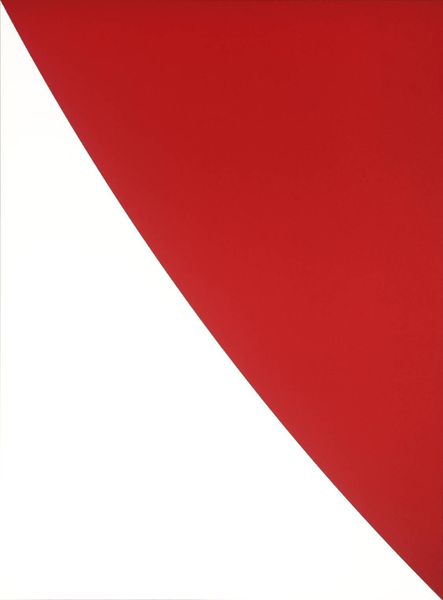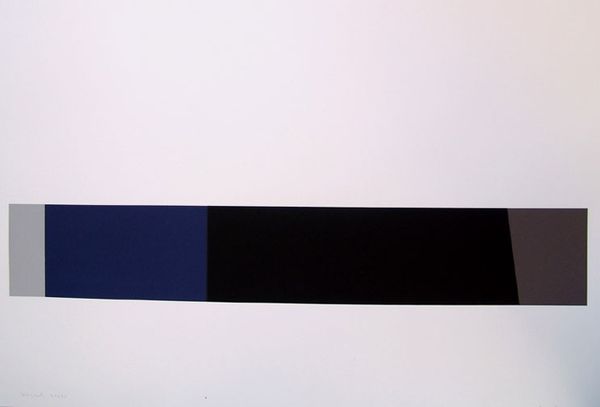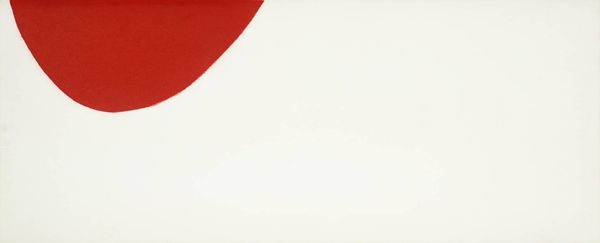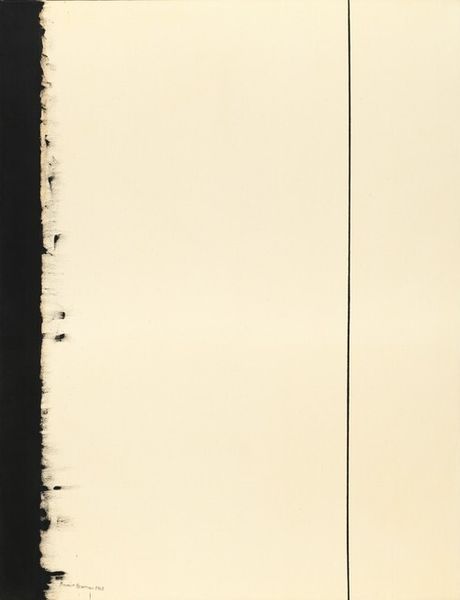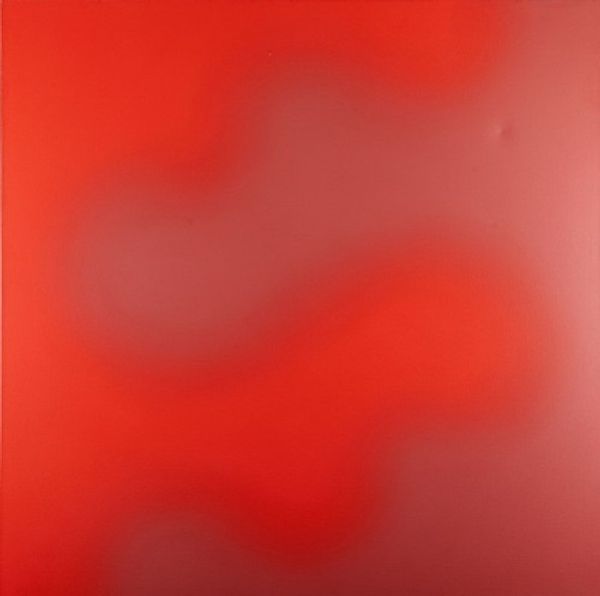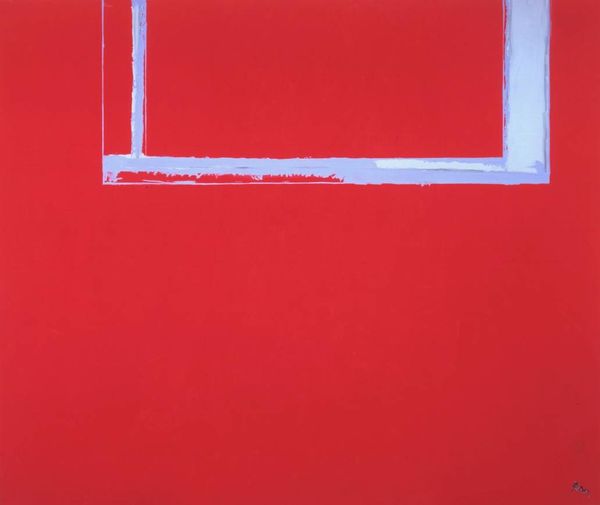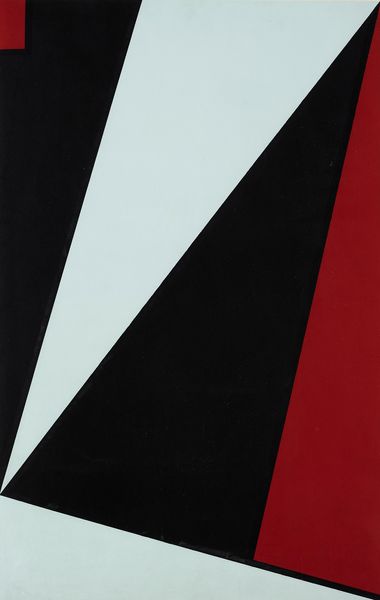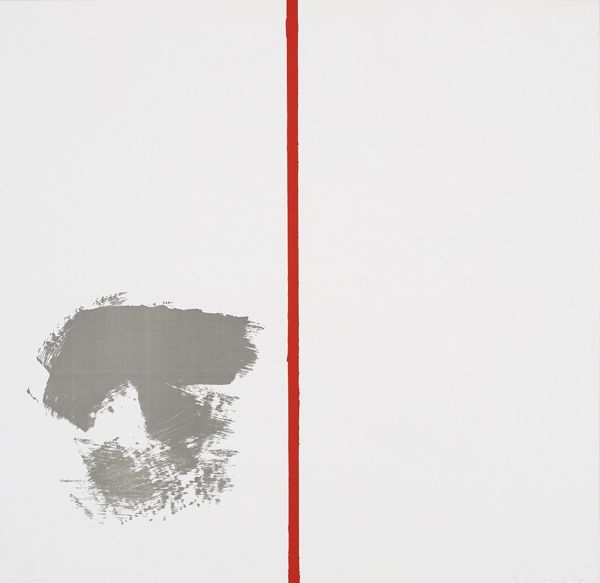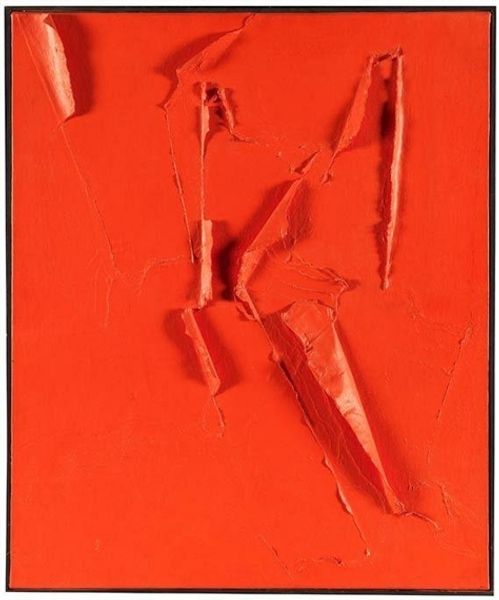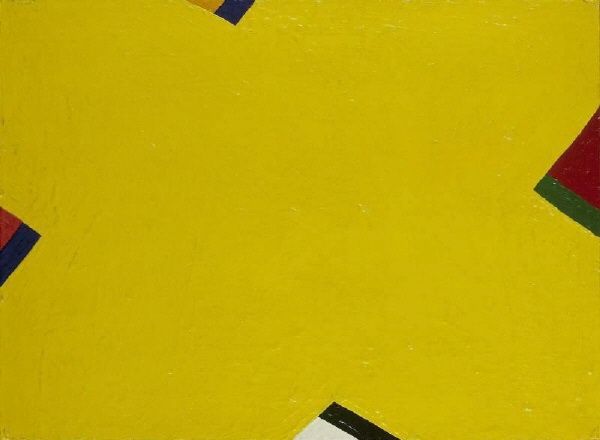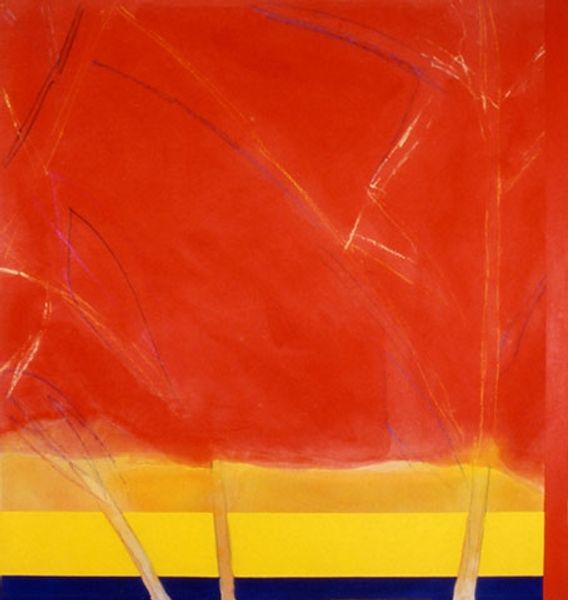
Copyright: Jean Degottex,Fair Use
Curator: Here we have a mixed media piece by Jean Degottex, created in 1972, simply titled "Untitled." It’s a powerful juxtaposition of two distinct planes bisected by seemingly jagged lines. Editor: My immediate thought is that it's starkly minimal, almost confrontational with its bold use of color, that blazing red against the cool white. It makes me think about a clash of energies. Curator: Precisely. Degottex, throughout his career, was intensely interested in challenging traditional Western painting, particularly its dependence on symbolic depth. He was aligning himself with the postwar impulse to purge meaning. Editor: And you see that purging reflected in the materials, wouldn’t you say? We know that Degottex combined acrylic paint and frottage on paper. I find that intriguing, a combination of deliberate mark-making and chance encounters, of a texture being almost accidentally lifted from the surface below. Curator: Yes, that accidental, almost violent gesture! Considering the social and political landscape of the early 70s, one could interpret this as a symbolic tear in the established order, a fracturing of social norms and expectations. The monochrome intensifies that effect, demanding a stark engagement with the present moment. Editor: It is difficult to ignore. For me the interest really lies in the facture, in that interplay between surface, texture and line. How much planning versus accident do you think went into its creation? The single dividing mark in each zone appears quite different under scrutiny. The mark cutting the red panel feels quite harsh and the material lifted looks rough. Conversely the smaller almost crack like fissure that appears within the white space looks naturally forming and more like an intentional effect. Curator: That is part of its brilliance! That tension that holds together intentional design and raw material manipulation is the kind of gesture that propels viewers towards an almost transcendental experience. Editor: The work asks some crucial questions, doesn't it? Where does intentionality end, and where does pure materiality take over in the experience of art? The contrast of the zones encourages a meditation of process. Curator: And the very fact that we’re debating its meaning speaks volumes. It continues to activate the sociopolitical concerns we bring to the space. Editor: Absolutely, the piece reminds us that art doesn’t exist in a vacuum. Its beauty lies in its dialogue with history and materiality.
Comments
No comments
Be the first to comment and join the conversation on the ultimate creative platform.
